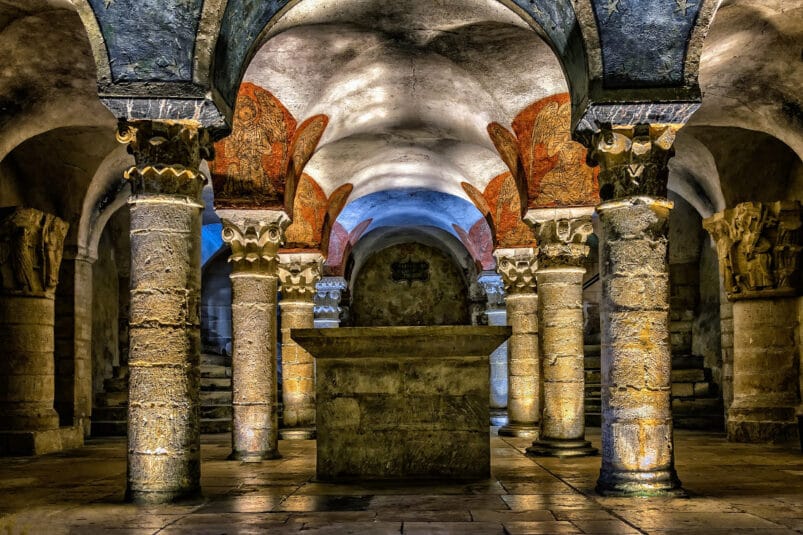Archaeologists have unearthed well-preserved coffins, tombs, and sarcophagi during excavations at Notre Dame cathedral, in Paris. As archaeologists pulled back 18th century stonework, they discovered graves from 700 years ago.
Excitingly, archaeologists discovered a fully preserved sarcophagus with a lead metal lining. It was found on a layer of soil that dates to the 1300s. This means that the burial would have taken place only a century or two after the cathedral was built. The archaeologists believe that this sarcophagus likely belongs to a someone with high status, given the style of the coffin and where it was placed.
Fragments of what might be the cathedral’s original rood screen were also discovered at the site. A rood screen is an ornamental barrier with a crucifix on top, and was common in medieval church design.
Whilst the scenes from the fire in April 2019 made global news, this is not the first time that Notre Dame has been restored from ruins. In the 1840s, vandalism, degradation, and low quality construction had left the building in a poor state. Éugene Viollet-le-Duc, an ambitious architect, was given the task of restoring the iconic structure. Whilst the building dates to the 12th century, much of what Notre Dame looked like since the 19th century was actually Viollet-le-Duc’s vision.
Excavation on this part of the cathedral began in early February, in preparation for works on the cathedral spire. By the end of March, the excavations will be closed to make way for the restoration. Currently, restorers aim to finish their work by 2024, in time for the Paris Olympic Games.
Read the press release from France’s Ministry of Culture here (In French), or check out the tags below for more stories on the Notre Dame cathedral.

